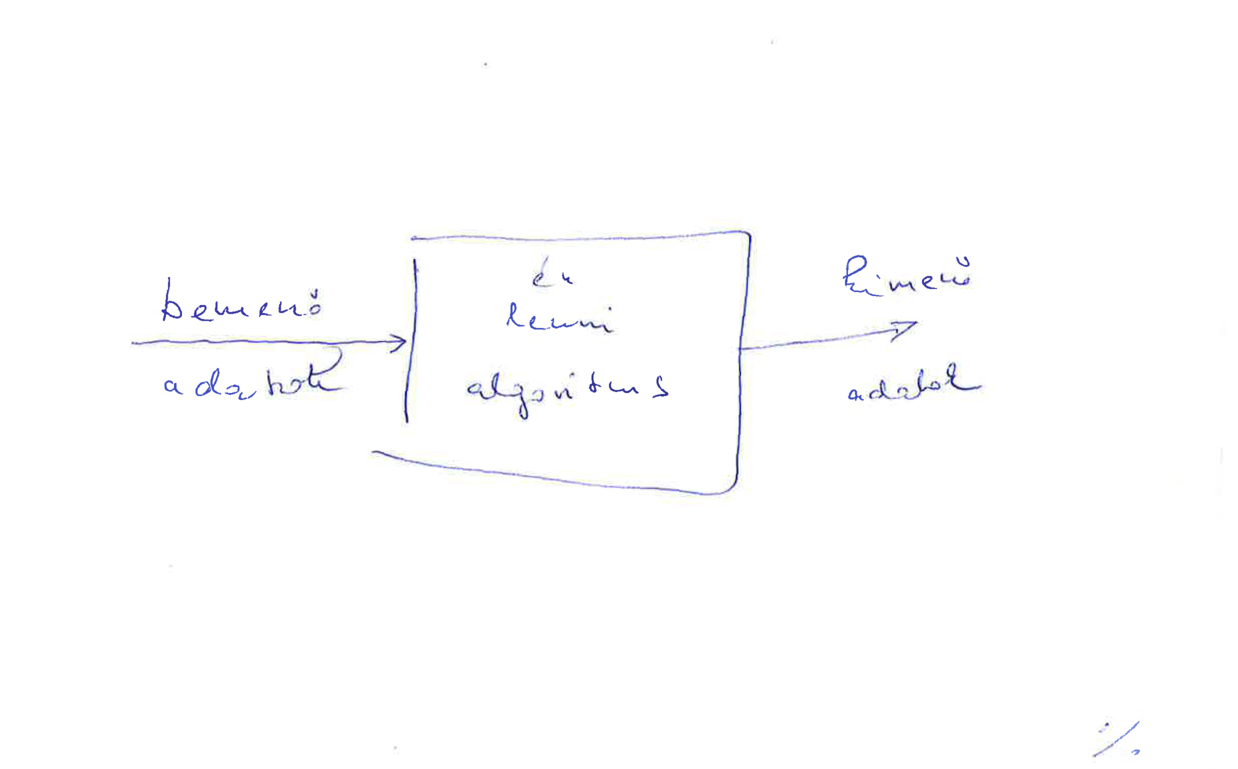An algorithm, drawn by a 73-year-old male retired scientist in Hungary.

I understand. Then I'd like another drawing. Now I should draw the…. No, how does an algorithm work? Just simply. Again, it doesn't have to be artistic. Input data. What? Data? Data. Data, yes. And what is written here? Me be an algorithm. What? Me be an algorithm. Me be an algorithm. Sorry, yes. And then an arrow. Outgoing data. Outgoing data. And what's going on here? In the box? What does that mean? You have to turn the page. Second page. Good, yes. This may not be to small for this. Then tell me what you think that is too difficult to draw. Our whole conversation was about something like that, after all. So that the data input needs to be processed, needs to be defined. There are many types of input data. For example, the algorithm processes the input data. Depending on what the input data is. Input data can be that I turn on the lamp. Input is also what you just said about saying something to a voice assistant. Input is also when I press a key on the keyboard. Input is also pushing the power button on the computer. So an algorithm that's a very, very, very broad concept. So it's really hard to explain, what an algorithm does. For example, creating an algorithm in a programming language is a bit more specific. If one says that a fourth generation programming language does not know an algorithm, that is an even more specific question. If you ask what an algorithm does in C ++ ... Because they all have an algorithm concept. So I say that… very much, in general, what an algorithm does is almost a philosophical question. So… obviously, brain surgeons also have concept what an algorithm does, because algorithms work in the brain. There are algorithms in the body ... also an algorithm, when I prick myself or fall in my stomach, what happens in my body. It also has an input, that I just fell on my stomach, or needle went into me it and its output is where at a given moment the process is. It's a process. Okay, and the output is when the consequence of it all disappears from my body. My wound healed, the trace of the scar was gone, I forgot about it, let's say. So ... Okay, that's enough. I say algorithm, it's a separate science the algorithm.